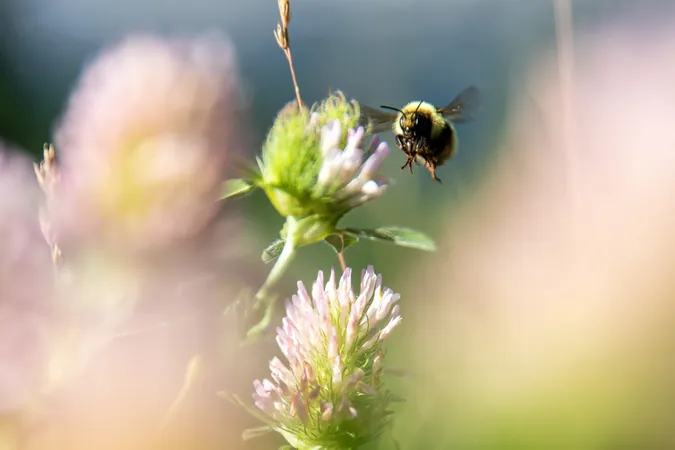
Groundbreaking Yeast Engineering Revolutionizes Herbal Medicine Production
2024-11-12
Author: Jacob
Introduction
In an exciting breakthrough for the herbal medicine industry, a team of bioengineers from Kobe University has successfully modified yeast to produce important herbal compounds at industrial scales. This innovative technique not only enhances the production of a specific compound, artepillin C, but also opens the door to the microbial creation of other beneficial plant-derived substances.
Challenges in Herbal Medicine Production
Herbal medicines are renowned for their health benefits, but they often face challenges in mass production. Among these compounds is artepillin C, celebrated for its numerous health-promoting properties, including antimicrobial, anti-inflammatory, antioxidant, and anticancer effects. Traditionally, artepillin C has been difficult to source since it is primarily derived from bee cultures, making it expensive and limited in availability.
Innovation in Biotechnology
Hasunuma Tomohisa, a leading bioengineer in the project, emphasized the importance of using engineered microorganisms to create a more efficient and cost-effective supply chain. 'To obtain a high-yield and low-cost supply, it is desirable to produce it in bioengineered microorganisms which can be grown in fermenters,' he stated. However, this impressive endeavor presented significant technical hurdles.
Identifying Key Enzymes
The first step involved identifying the specific enzyme that plants utilize to synthesize artepillin C. This crucial enzyme was only recently discovered by researcher Yazaki Kazufumi at Kyoto University, who then collaborated with Hasunuma's team to explore its application in yeast fermentation.
Selection of Yeast Species
The researchers selected the yeast species Komagataella phaffii for its superior capabilities over traditional brewer's yeast. This organism not only has a higher capacity for producing essential compounds at elevated cell densities but also does not produce alcohol, which can inhibit growth.
Key Findings
Their findings, published in the journal ACS Synthetic Biology, reveal that their engineered yeast can produce ten times the amount of artepillin C than previously possible. This achievement stemmed from meticulously fine-tuning various stages of artepillin C’s molecular production pathway.
Overcoming Production Challenges
Interestingly, artepillin C does not easily exit the yeast cells, as it tends to accumulate within them. In response, the researchers increased yeast cell density in fermenters by selectively removing certain mutations that hindered robust growth.
Future Prospects
Looking ahead, Hasunuma envisions several methods to enhance artepillin C production even further. These include optimizing the critical final step of chemical synthesis by modifying the enzyme involved or increasing the availability of precursor materials. Another promising avenue is the potential to engineer a transporter that would facilitate the export of artepillin C out of the cells while retaining precursor compounds inside.
Broader Implications
The implications of this groundbreaking research extend far beyond artepillin C alone. With thousands of similar compounds existing naturally, the insights gained from this project may pave the way for the microbial production of a myriad of other plant-derived compounds. This could revolutionize herbal medicine, making potent natural remedies more accessible than ever to those in need.
Conclusion
As the world increasingly recognizes the value of holistic health approaches, advancements like these could lead to a new era in integrative medicine, blending traditional remedies with cutting-edge biotechnological innovations. Keep an eye out for the emerging herbal solutions produced by this exciting research!









 Brasil (PT)
Brasil (PT)
 Canada (EN)
Canada (EN)
 Chile (ES)
Chile (ES)
 España (ES)
España (ES)
 France (FR)
France (FR)
 Hong Kong (EN)
Hong Kong (EN)
 Italia (IT)
Italia (IT)
 日本 (JA)
日本 (JA)
 Magyarország (HU)
Magyarország (HU)
 Norge (NO)
Norge (NO)
 Polska (PL)
Polska (PL)
 Schweiz (DE)
Schweiz (DE)
 Singapore (EN)
Singapore (EN)
 Sverige (SV)
Sverige (SV)
 Suomi (FI)
Suomi (FI)
 Türkiye (TR)
Türkiye (TR)